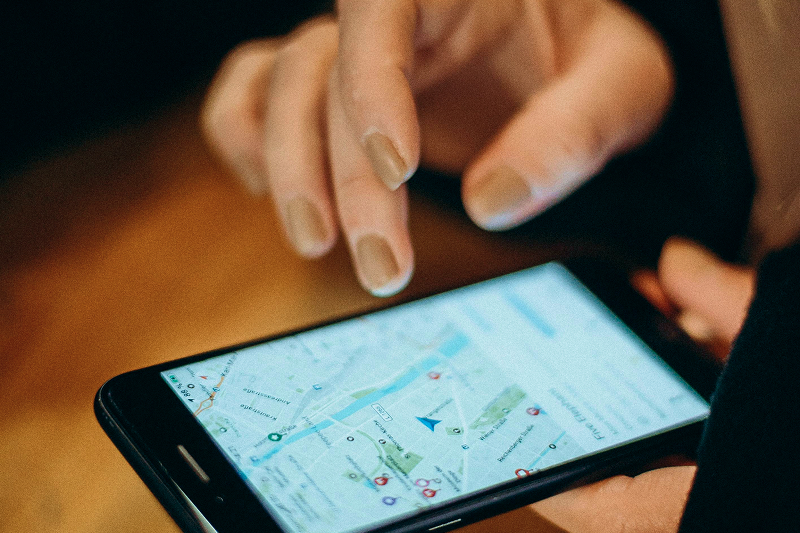
Made from crossbreeding two distinct apple varieties, horticulturalists from the University of Minnesota—using time-honoured techniques—produced the Minneiska tree, a particular tree that grows a seasonal apple harvested in early fall. This apple is called SweeTango and they have a cult following! And for this season, they have implemented geotargeting in their marketing strategy.
To alert fans that SweeTango is back in the market, the marketing team is buying radio advertisements and push digital video advertisements geotargeted to retailer markets to boost sales. It will allow the team to divide their target market based on where their customers go and then deliver content or ads to them in order to make more impactful contact with them.
SweeTango isn’t the only one using geotargeting—plenty of B2B and B2C brands are looking into it. So, how does geotargeting work?
How Does Geotargeting Work?
Geotargeting works by using a combination of WiFi triangulation technology, IP addresses, browser cookies and data supplied by users to define the user’s location to serve them messages that are geographically relevant. Some digital advertising platforms such as Google Ads allow users to determine one or multiple locations in which they want their ads to show.
Today, geotargeting begins when mobile phone users opt-in to disclose their location through the apps on their mobile phones. When the marketing company or app publisher acquires this location data, they must then determine what to do with it. If they wish to serve the push alerts, content or ad in real-time, they will have determined the locations that will activate those actions. When someone enters that pre-defined location, they will receive the campaign or content at that moment.
How Is Geotargeting Used In Marketing?
Among the many businesses that use geotargeting very effectively, fashion retailers are probably at the top of the list. The bigger fashion retailers operate on an international scale, therefore, it is critical to showcase relevant items according to the user’s area. For instance, it would not be a good application of advertising budget to target people in hotter climates with winter garments and vice versa.
So, where else can geotargeting be applied? Geotargeting is also applied by brick-and-mortar stores looking to improve footfall in their locations. In restaurants where owners might want to take their competitor’s customers. For football clubs, if they want to target fans at events with the goal of boosting ticket sales for upcoming events, jersey sales and app downloads.
According to eMarketer, consumers spend more time online than watching TV, averaging 3 hours 54 seconds, which provides ample time for ad exposure. Therefore, there is more success in gathering actionable information about their audiences rather than serving present audiences within their geofences. Marketers discover and comprehend who comes to their stores and when this way. Then, they proceed to follow up with significant ad content offered to their audiences’ mobile phones, enabling more conversions and store visits.
Is Geofencing the Same Thing?
Geofencing is targeting users based on a particular area. When marketers apply geofencing, they are drawing a digital “fence” around a location where they want to trigger messaging or notifications. And to recap, geotargeting is more nuanced—the audience is targeted based on both location and behaviour.
For example, GasBuddy uses geofencing in its marketing strategy. Every time a customer enters a geofenced retail location, they get a limited-time GasBack offer sent to their phone. This helps to improve sales and engagement by targeting customers in places where they are likely to buy something.
On the other hand, USTA uses geotargeting at the US Open. By applying geofencing, in-app behaviours and proximity targeting, the USTA was able to get 32% of users to click the ‘Buy Now’ button for tickets in the Message Center.
Advantages of Geotargeting
There are many benefits to geotargeting. When someone sees a business in their area, it instantly piques their interest. If a consumer knows the business is close by, it strengthens the customer experience and establishes a relationship.
No matter where customers are located, people would need specific services. Geotargeted advertisements help you apply technology to bring customers and businesses together. So, the business has to establish itself as a part of the community and link with the locals via geotargeting tools. It promotes local visits and is part of the global movement that motivates people to “shop local”. They may be more interested in referring the business to people they know that need their services.
When a customer knows a business is local to them, it displays the brand as trustworthy. In effect, it dissolves the barrier that many businesses have trouble with when trying to connect with people outside of their locality. People can find a business easier and improve brand visibility locally.
When a customer knows that a business is close by and wants to visit, it saves both of them time. Geotargeting links businesses with their neighbours who want to “buy local” and the correct advertising methods are all it takes to reach them.
Conclusion
Marketers don’t need to be advertising giants to benefit from geotargeting. It’s a wonderful fit for brands of any size. The primary advantage is the capacity to market to a highly-targeted audience.